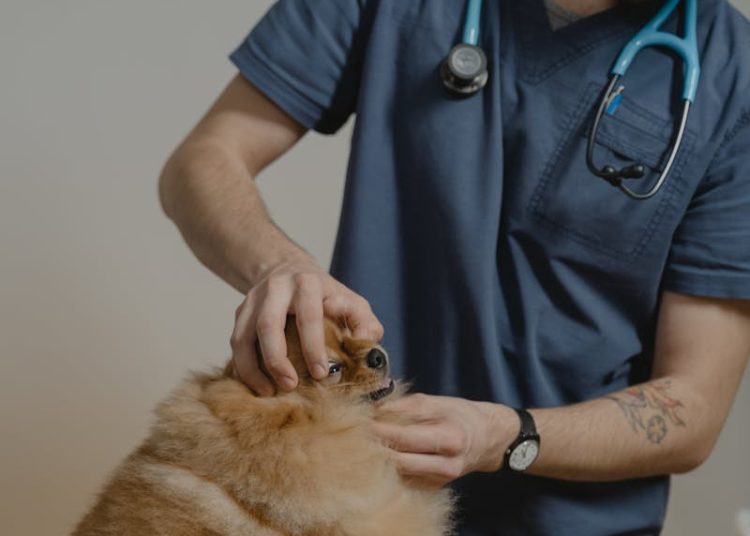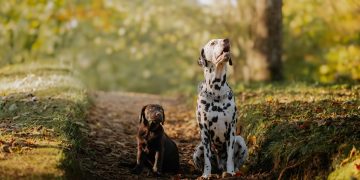Bringing a new puppy into your home is an exciting experience filled with lots of love, playtime, and, of course, learning. Puppies are like sponges, ready to soak up new experiences and develop habits that will shape their behavior for years to come. One of the most important habits to establish early on is grooming. Starting grooming routines during puppyhood not only helps keep your furry friend clean and healthy but also sets the foundation for a lifetime of stress-free grooming sessions. This guide will walk you through everything you need to know about grooming puppies and creating good habits from the start.
1. Why Early Grooming Matters
Grooming is more than just keeping your puppy looking cute—it’s an essential part of their overall health and well-being. Getting puppies accustomed to grooming practices early on makes them more comfortable with the process, which can help reduce stress and anxiety as they grow older. Puppies that are introduced to grooming gradually are less likely to struggle or resist later in life, making visits to the groomer or vet a more pleasant experience for everyone.
Additionally, early grooming allows you to check for any health issues that may arise. Regular grooming gives you the opportunity to inspect your puppy’s coat, skin, ears, and paws for signs of irritation, parasites, or injuries. This early intervention can prevent minor issues from developing into more serious problems.
2. Setting Up a Comfortable Grooming Environment
The key to successful grooming is creating a calm, comfortable environment for your puppy. Choose a quiet spot in your home where distractions are minimal. A non-slip mat can help keep your puppy stable, making them feel more secure during grooming.
Make grooming sessions enjoyable by using plenty of positive reinforcement. Reward your puppy with treats, praise, and gentle petting throughout the grooming process. Keeping the sessions short, especially in the beginning, will help prevent your puppy from becoming overwhelmed. As your puppy becomes more comfortable, you can gradually increase the time spent on grooming.
3. Brushing: Building a Routine
Brushing is one of the simplest yet most important grooming habits to establish with your puppy. Regular brushing helps remove dirt, debris, and loose fur from your puppy’s coat while distributing natural oils that keep their skin and coat healthy. It also helps prevent tangles and matting, particularly in breeds with longer coats.
Start by introducing your puppy to the brush in a positive way. Let them sniff the brush and get used to it being near them. Begin brushing with gentle strokes, focusing on areas that are less sensitive, such as their back. Gradually work your way to more delicate areas like their belly and legs. Always use a brush that is suitable for your puppy’s coat type—soft-bristle brushes are ideal for young puppies, while slicker brushes may be better for longer or thicker coats.
4. Bathing Your Puppy
Bathing is another essential part of puppy grooming, but it should be done sparingly to avoid stripping natural oils from their coat. Generally, puppies only need a bath every 4-6 weeks, unless they get particularly dirty. When bathing your puppy, always use a shampoo specifically formulated for dogs, as human shampoos can be too harsh for their sensitive skin.
To get started, fill the tub or sink with a few inches of lukewarm water. Gently place your puppy in the water, using a cup or sprayer to wet their fur. Apply a small amount of shampoo, lathering it into their coat while avoiding the eyes and ears. Rinse thoroughly, as leftover shampoo can cause irritation. Once rinsed, use a soft towel to gently dry your puppy. If your puppy is comfortable with the noise, a pet-safe blow dryer on a low, cool setting can be used to speed up the drying process.
5. Nail Trimming: Start Early
Nail trimming is a grooming task that can be intimidating for both puppies and owners, but starting early can make all the difference. Overgrown nails can cause discomfort and even lead to joint issues, so keeping your puppy’s nails trimmed is crucial for their health.
To begin, get your puppy used to having their paws handled. Spend time each day gently touching and holding their paws, rewarding them with treats for staying calm. When it’s time to trim, use a pair of pet-specific nail clippers, and trim only a small portion of the nail to avoid cutting into the quick—the sensitive area that contains blood vessels. If you’re unsure, ask your vet to show you how to safely trim your puppy’s nails.
6. Ear Cleaning: Keeping Ears Healthy
Puppies, especially those with floppy ears, are prone to ear infections, so regular ear cleaning is essential. Check your puppy’s ears weekly for signs of redness, odor, or excessive wax buildup. To clean their ears, use a vet-approved ear cleaning solution and a cotton ball. Avoid using cotton swabs, as they can damage the ear canal.
Gently lift your puppy’s ear flap and squeeze a small amount of the cleaning solution into the ear. Massage the base of the ear to help loosen any debris, then use a cotton ball to wipe away the excess. Be sure to reward your puppy for staying calm during the process.
7. Dental Care: Starting a Lifetime Habit
Dental health is just as important for puppies as it is for adult dogs. Introducing your puppy to tooth brushing early on can prevent dental issues like plaque buildup and gum disease. Use a toothbrush designed for pets, along with pet-safe toothpaste in a flavor your puppy enjoys.
Start by letting your puppy taste the toothpaste and get used to the toothbrush. Gradually begin brushing their teeth in gentle, circular motions, focusing on the outer surfaces where plaque tends to accumulate. Keep sessions short and positive, and always reward your puppy afterward.
8. Handling and Socializing During Grooming
Grooming provides an excellent opportunity to handle and socialize your puppy, making them more comfortable with human touch and new experiences. During grooming, handle different parts of your puppy’s body, including their paws, ears, and tail. This will help desensitize them to touch and make future grooming, veterinary visits, and other handling situations much easier.
Invite friends or family members to gently handle your puppy during grooming sessions to help them become comfortable with different people. The more positive experiences your puppy has with being handled, the less anxious they will be as they grow older.
9. Professional Grooming: When to Start
While many grooming tasks can be done at home, professional grooming may be necessary, especially for certain breeds that require specialized haircuts. It’s a good idea to introduce your puppy to professional grooming at an early age—around 12-16 weeks, once they have received their vaccinations.
Before the first appointment, get your puppy accustomed to the sights and sounds they may encounter at the groomer, such as clippers and blow dryers. A positive first experience with a professional groomer can set the tone for future visits, helping to ensure your puppy is comfortable and relaxed.
10. Making Grooming a Positive Experience
The most important aspect of grooming your puppy is making it a positive experience. Puppies are highly impressionable, and their early experiences will shape their behavior and attitude towards grooming for the rest of their lives. Use treats, praise, and playtime to make grooming enjoyable, and never force your puppy into a situation that makes them scared or uncomfortable.
If your puppy seems anxious or fearful, take a step back and work on desensitizing them to the grooming tools and process. For example, you might let them sniff the brush or clippers without using them, rewarding them for staying calm. Gradually increase your puppy’s exposure to grooming in a way that builds their confidence.
Grooming your puppy is an opportunity to bond and build trust. With patience, positive reinforcement, and consistency, you can establish healthy grooming habits that will benefit your puppy for a lifetime. Not only will your puppy look and feel their best, but they will also be healthier and more comfortable with grooming and handling as they grow into adulthood.








